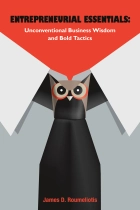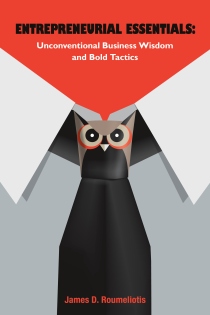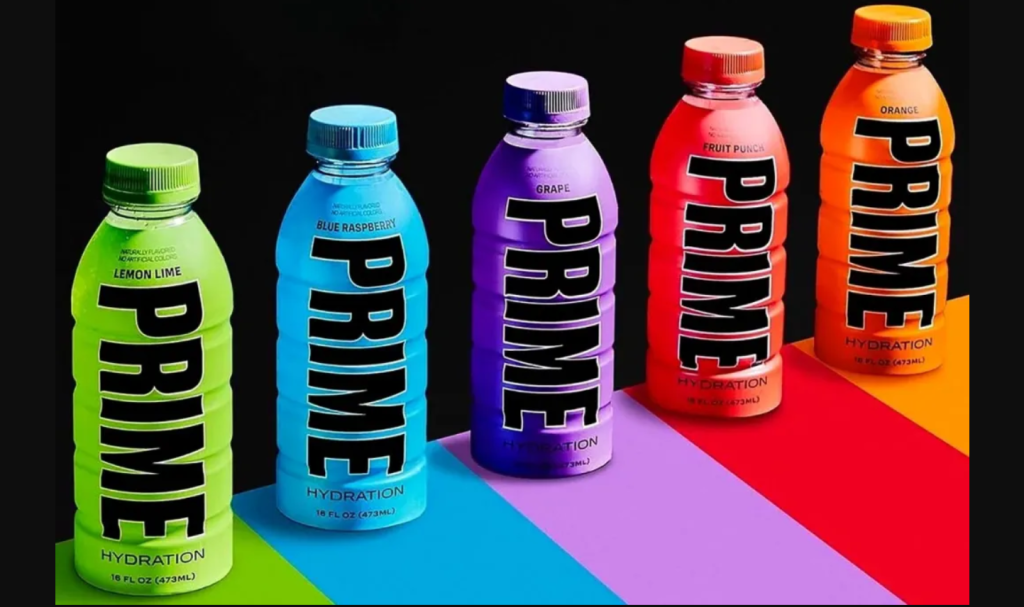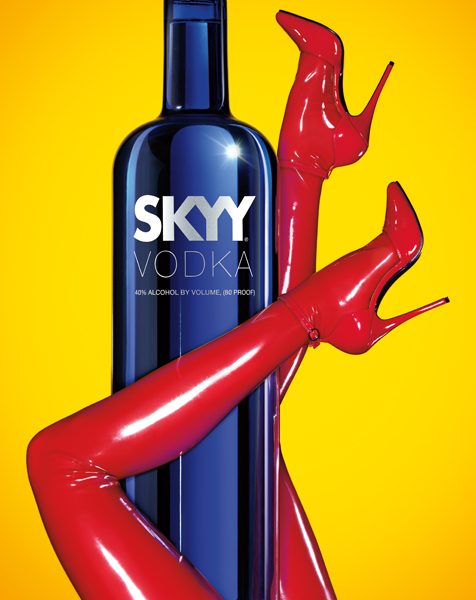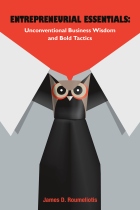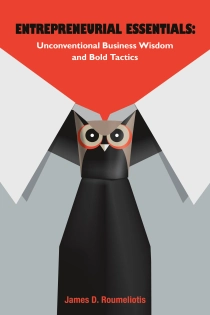by James D. Roumeliotis













Several years ago, I had the privilege of working on-board the 147m/482 ft Saudi Royal family yacht the “Prince Abdul Aziz.” It was a first-hand experience with the wealthy 1% and was quite an eye-opener. A typical day with its owners consisted of shopping at Gucci, LV, Hermes and Bulgari when we made port regardless of location in the Western Mediterranean region. The 25K euro daily average shopping splurge prompted the support staff to purchase large suitcases or trunks to be used as temporary storage. Not surprisingly, given the situation among visiting VIPs and royalty, this was the norm.
Given my professional métier in luxury brand management, I realized that this target audience belonged to a category distinct from any other which are labelled as the One Percenters.
The frequent conspicuous consumption was considered a normal occurrence for the Royalty and its VIP guests as were the elaborate prepared meals devoured that would make the mainstream cringe.
Who on earth are the one percenters?
Along with Sheikhs and Princes, HNWI (High Net Worth Individuals) are considered, by luxury marketers, as the elite segment of the market. According to the Capgemini Wealth Management World’s Wealth Report 2021, it defines HNWIs as those who possess at least US$1 million in financial assets. On the other hand, there are the ultra-HNWIs or UHNWI as those who hold at least US$30 million in financial assets, with both excluding collectibles, consumables, consumer durables and primary residences. The report states that following a robust growth of 8.3% in 2010, the global population of HNWIs grew marginally by 0.8% to 11.0 million in 2011. Most of the growth can be attributed to HNWIs in the US$1 million to US $5 million wealth band that represent 90% of the global HNWI population. The top three countries, U.S, Japan and Germany, retained 53.3% of the total share of HNWIs
Clearly, One Percenters have different expectations and experiences than the rest of us. Here are just a few of this target audience’s distinguishing traits:
– They are better educated;
– Have traveled more (and continue to do so);
– Own one or more successful business and/or inherited their wealth;
– Possess investments mainly in real estate, stocks and bonds;
– Are avid connoisseurs of the fine arts/cultural events and vintage/wines;
– Own top quality merchandise: elaborate homes, exotic cars, bespoke attire, as well as seek services which cater to their discernment;
– Have explored plenty more in their lives due to their significant disposable income/wealth.
In a recent American Affluence Research Center report, its founder and researcher, Ron Kurtz recommends that: “Luxury brands and luxury marketers should be focused on the wealthiest one percent because they are the least likely to be cutting back (during tough economic times) and are the most knowledgeable about the price points and brands that are true high-end luxury.”
What do the HNWIs and UHNWIs seek in their lifestyle?
According to the white paper, Strategies for Effectively Marketing to High Net Worth Consumers”, written by Richard Becker (August 2008), High Net Worth Individuals enjoy Golf, tennis and physical fitness ‒ endeavors typically associated with exclusive ‘members only’ clubs.
HNWIs/UHNWIs cherish their time and know what they want. Even time is a luxury and limited resource for them, thus saving time greatly trumps saving money. This is part of the reason service is crucial for them. They can be generally described as:
– Seek a higher and exacting standard with a minimum set of expectations;
– Fussy in nature;
– Often require customized solutions to mirror their lifestyle – whether a product or service;
– Take pleasure on getting extra attention from the brands they pursue;
– Prefer the uncommon to the mundane;
– Expect to be offered unique choices and experiences;
– Synonymous with a taste for luxury with pedigree and craftsmanship which they’re able and willing to pay;
– Aspire an aura of exclusivity;
– Crave an experience heightened by exceptional service along with a personal relationship;
– Seek products which are different and more sophisticated – whether it’s apparel, electronics, food or insurance;
– Want to feel in command of their purchase decision without any pressure;
– Expect discretion and confidentiality – most notably from service providers such as private wealth institutions and concierge services amongst others.
Likewise, what they purchase is a visual extension of their individuality and lifestyle. A well-crafted product, for example, reflects an individual call to beauty.
The preeminent luxury brands remain top of mind with the HNWI/UHNWI
When the premium plumbing brand, The Kohler Company, introduced the ultimate toilet fit for the well-heeled, it developed a contemporary industrial design that would make Apple glow with envy. Numi, as the model was baptized, includes technology and engineering that is unconventional with most toilets as we know them. Its features include, amongst others, ambient lighting, a bidet, foot warmers, a seat warmer, music, lighting, and hands-free flushing – which are all controlled through a remote which, with a press of a button, also lifts and lowers the lid. All this can be had for a mere $6500.
Luxury purveyors who aspire to cater to the top tier of spenders should have a mission, vision and a sound implementation strategy to reach this elite demographic target ‒ short of simultaneously pursuing the aspirational consumers who are prone to cutting back when the economy takes a dive. This latter group of consumers dilutes the cachet of the brand and can turn out less profitable in the long run. Moreover, the HNWI/UHNWI frown upon offerings which are accessible to the mainstream as they desire status and exclusivity.
Products and services should be unique, well designed and packaged, finely crafted ‒ and executed with refinement for the elite. Those are ways to entice the interest of, and ultimately retain, the ultra-wealthy. Products and services should never appear as ordinary yet absolutely personal.
In the luxury sector, traditionally there hasn’t been any shortage of customization for the very well heeled. Exclusive and bespoke travel companies provide tailor made adventures and excursions, whereas, the ultra-luxury and exotic automobile sectors such as Rolls Royce and Ferrari respectively offer a wide array of customization options. Each vehicle coming out of the studio will be completely unique and guided by a personal designer at the manufacturers. This is how ‘the total customer experience’ materializes.
Some of the most prominent companies that cater to the 1% include:
LVMH Moët Hennessy ‒ Louis Vuitton S.A (French conglomerate that owns a legion of luxury brands including Louis Vuitton, Marc Jacobs, Fendi, TAG Heuer, and Dior cosmetics among many others and in various categories), Chanel, Hermes, PPR/Kering (owns controlling shares of Gucci and Yves Saint Laurent, among others), Richemont (owns the prestigious Alfred Dunhill, Cartier and Montblanc brands along with many others), Rolls Royce Motors, Bentley Motors, Bugatti Motors, Rolex, Patek Philippe, Goldman Sachs, Gulfstream, Sotheby’s, Bulgari, Tiffany & Co., and Harry Winston to name a few.
Luxury service brands follow a similar pattern. Consider American Express − most notably for its “by invitation only” Black/Centurion card. For hotels, worthwhile mentions are the Hotel Plaza Athenée, the Four Seasons (including its private jet tours), the Ritz Carlton, and boutique hotels Hotel du Cap and Hotel de Crillon to name a few prominent ones. They splurge and provide the perfect luxury experience with outstanding service, exclusivity, and pedigree.
How the luxury purveyors reach, cater and retain the 1%
Studies over the years have shown that the HNWIs/UHNWIs travel frequently and usually do so on a private jet. It’s also a fact that emerging markets from commodity rich countries such as Brazil, Russia, India and China, have a tremendous amount of new ultra wealthy citizens that can’t be ignored.
Reaching them is not easy. However, following are several approaches the prestigious luxury brands are utilizing.
– Target them in their gathering places in major cities where most UHNWIs reside – London is such a prominent location;
– Sponsor and/or advertise where the HNWI/UHNWI meet and play such as prestigious golf clubs, polo events etc. Rolex supports prestigious sporting and cultural events all over the world including tennis, the arts, golf tournaments and yachting.
– Advertise in private jet terminals worldwide called Fixed Base Operators (FBOs) ‒ facilities that handle non-scheduled flights. One such opportunity is in Davos (Switzerland), towards the end of January, where the World Economic Forum is held. There are also magazines, such as “Privat Air” which are published specifically for private jet travelers. In 2012, there were over six million private jet flights. It is, undoubtedly, a targeted audience where one reaches the ultra-wealthy family together – which may be discussing a product or service you may be offering. Swiss watchmaker Audemars Piguet had several helipads with their logo located on Manhattan’s 34th Street. The helipads included paintings of their watches which functioned as landing markers.
– Meet and woo its discerning target customers at high profile industry shows and events. Burgess Yachts, for example, participates at the annual Super Yacht Show in Monaco which draws the well-heeled shopping for a multi-million dollar yacht.
– Hone in cities where the ultra-wealthy normally visit for the finest luxury shopping experiences – mainly Milan, Paris and London with their shops on prestigious avenues;
– Are promoters of good taste and the arts which is what the super-rich equally enjoy;
– Make an effort to approach/communicate with influential members of entourages such as drivers, personal assistants, pilots and bodyguards;
– Advertise and contribute content in prestigious lifestyle magazines which cater to the ultra-affluent including Amex’s ‘Departures’ magazine, ‘Worth’, ‘Elite Traveler’, ‘Monocle’ and ‘Burgess’ amongst others.
– It goes without saying that successful brands have an online presence/visibility including a clean looking and engaging website, along with a carefully targeted social media existence to build long term online awareness, loyalty and value for the brand.
Along with what the prestigious brands are doing to attract the top spenders, consider creating an exclusive/”members only” online club/site. Moreover, if you’re offering products, boasting about artistic development by engaging with them and encouraging a visit to your atelier to witness your product being crafted. Videos should also be considered for viewing online.
Research where the wealthy neighborhoods are worldwide by using demographic data. This information reveals everything from median income and age, educational levels and consumption statistics. Demographic data also helps improve target marketing and advertising.
Sell a distinct lifestyle which is what discerning clients look for. Be in the forefront of creativity and have all your staff, regardless of department/responsibility, as your brand ambassadors.
Occasionally, organize exclusive “by invitation” events as a patron appreciation gesture. Being invited to an exclusive event makes one feel notable. For example, Italian sports automaker Maserati invited a select number of brand loyalists to a new experience in Europe that gave them the opportunity to sail on-board the 70 ft./21,3 m Maserati sailboat. In addition, they drove models in its current range including the new Maserati Gran Turismo Sport model.
Create/publish an upscale lifestyle magazine, every other month or quarter, which should include noteworthy information on the brand and the arts, as well as the causes it supports – in an environmentally friendly print format, along with a digital version. The Bentley motors magazine is a good case in point. The layout, choice of articles/stories and advertisers reflect the tastes of its existing and potential customers.

Removing some of the guilt of ostentatiousness
Corporate Social Responsibility or CSR, along with sustainability issues, is a trend increasingly practiced in the luxury domain to send a message to their audience that they it cares. This is communicated through sponsorships, advertising, public relations, their websites and other media sources. The message conveyed is to enjoy guilt-free ostentatious purchases where part of the purchase price is donated to a worthwhile cause. Louis Vuitton uses celebrities in its advertising campaigns whose fee goes to charity.
Any business which is willing to get involved in social causes to impress its target market should make a genuine effort genuine, as sophisticated consumers can tell when it doesn’t come across as a genuine effort
Putting it all into perspective
A September 2017 study by the U.S. Federal Reserve reported that the top 1% owned 38.5% of the country’s wealth in 2016. According to a June 2017 report by the Boston Consulting Group, around 70% of the nation’s wealth will be in the hands of millionaires and billionaires by 2023.
Fickle and discriminating, these customers’ purchasing attitudes are based on personal beliefs and taste for finer things in life along with discretion. They are quite selective, know what they want and aspire to be catered to effortlessly. They seek the total customer experience along with pampering, personalized service which can include fashion consultations and exotic journeys. Best of all, they are willing to pay top money for the products and services they want.
An offline strategy requires an equal online presence. This is accomplished by placing stunning imagery, video, engaging content and constant refinements along with savvy Internet marketing to connect the brand with luxury social channels. It’s connecting with its like-minded audience.
Think brand positioning and focus on, as well as cater solely to, your core market rather than be all things to all people. Stay out of the bottom end and aspirational markets and instead, aim at the top end markets.












_________________________________________________________
Request your TWO FREE chapters of this popular book with no obligation.
